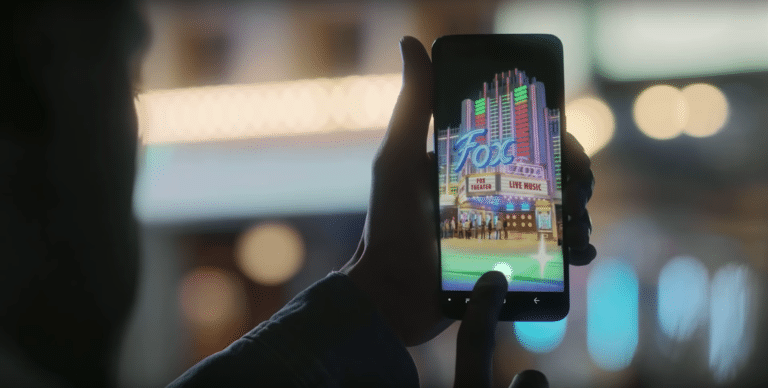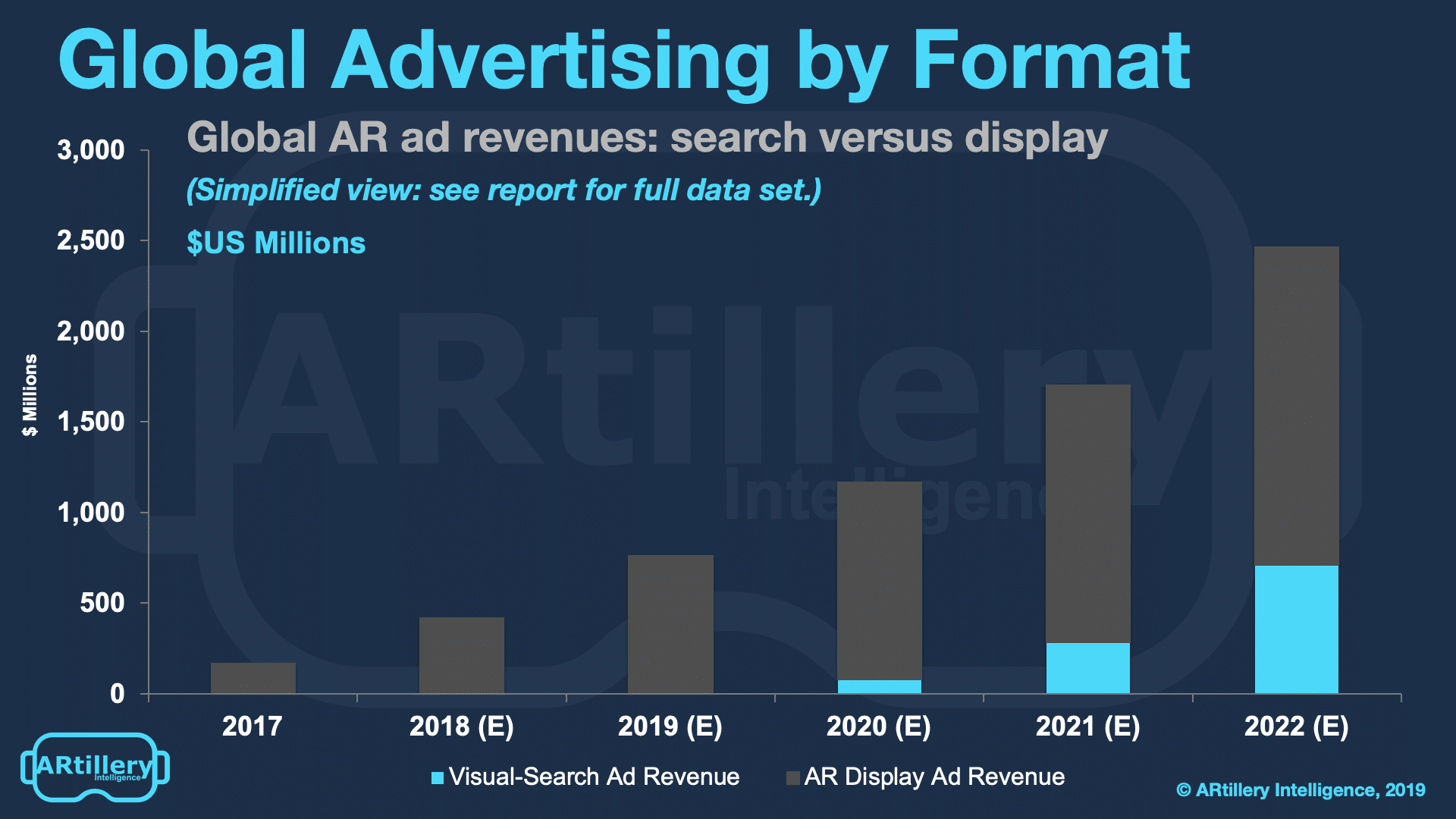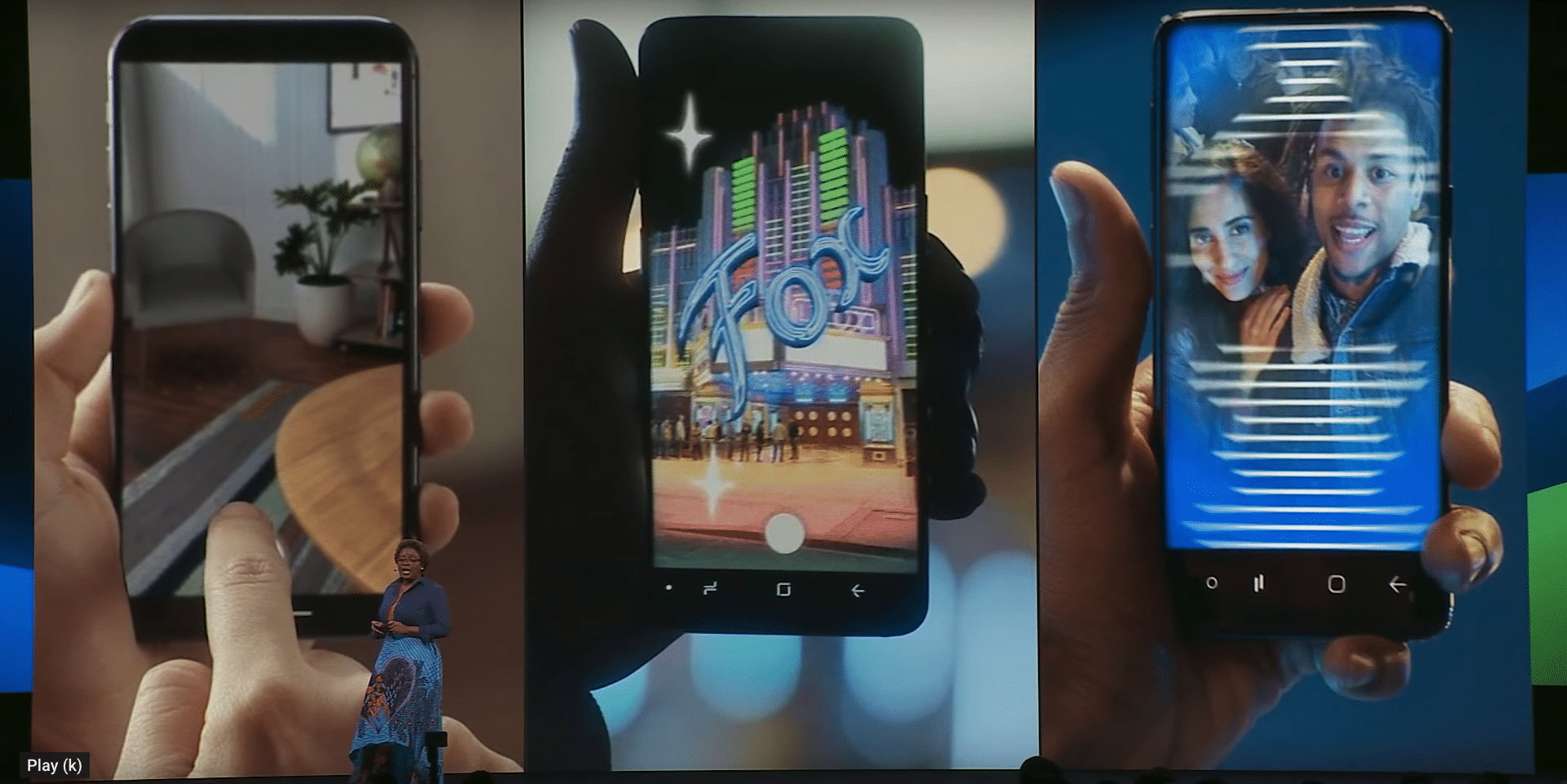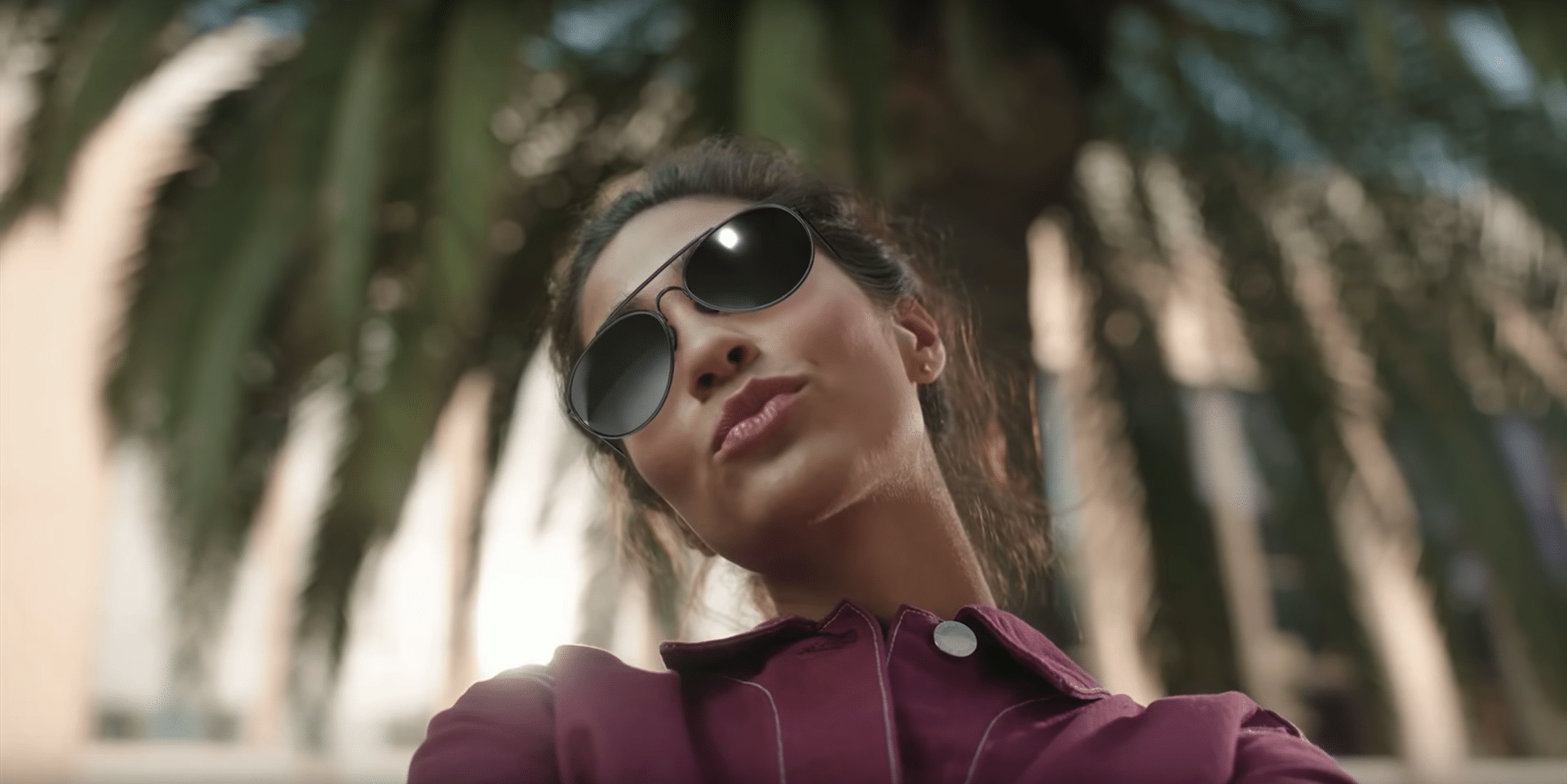
Among things AR is good at, demonstrating consumer products in immersive ways is near the top of the list. This engenders AR advertising, which we’ve pegged as a $2.46 billion revenue opportunity by 2022, up from $407 million last year.
Advertisers are keen on AR because it can create higher levels of engagement than traditional ads. It can also span the full consumer purchase funnel as we’ve examined. That includes product awareness through social feeds, AR try-ons, and actual purchases… all in the same flow.
Snapchat is the revenue leader so far, due to an earlier start in AR Lenses and continued investment. But Facebook is approaching in its rearview mirror with similar AR Lens ambitions, global scale, and motivation to invest in AR as a corollary to its core ad revenue model.
This was seen most recently in its AR treatment at the F8 conference. The company announced Windows support for its Spark AR platform (development engine for AR lenses), AR Lenses on Instagram, and the fact that one billion users have engaged with lenses over the past year.
This week, we got a further glimpse into Facebook’s AR ad ambitions through VentureBeat’s interview with Matt Roberts, product manager for Spark AR. It supports our past analysis and adds color on Facebook’s direction, so we’ve excerpted select quotes for AR Insider readers.
See the highlights below, which we’ve categorized into themes.

AR’s Beginnings in Gaming
The power of play and the power of people experimenting with technology through games and playful applications is a natural and necessary part of the evolution of any technology. You see that on the front line of new technologies very often. I’m encouraged by the fact that it has that much appeal. As far as where we think it can go and what’s next, I think the playfulness and fun are going to continue. Social media and sharing are about connecting with people, expressing yourself, having a good time, sharing jokes, sharing things you like, and affinity for brands.
AR Advertising and Commerce
We’re very interested in things like shopping and ads, things that help you make better decisions as a consumer using AR…. We’re running an advertising beta right now with AR on Facebook. You can see an ad in your news feed, open the camera, and preview a product there. We’re working with 20 brands on that right now. Things like glasses and makeup and other consumer goods, or brands in media and film.
Advertisers’ Affinity for AR
When we talk to advertisers and brands, they pretty consistently tell us the same thing. One, they’re looking for ways to increase the interaction and engagement and richness of their advertising experience with customers. They want them to spend more time thinking about their products, getting more nuance, more detail. Personalizing it to their needs.

AR’s Ability to Demonstrate Products
Makeup is a good example of a product that’s classically difficult to buy online, because you’re not actually buying makeup. You’re buying the look the makeup delivers. It’s a powerful difference to be able to try that out virtually versus just seeing the colors on a model. That’s an example of personalization and engagement that’s really different, and AR can enable that…
…We have a lot of brands interested in doing more with makeup and looks. We’re also expanding our tech to cover new types of styles. You can change your hair color. You can try on jewelry and watches and things like that, have the jewelry with your makeup at the same time. These are the types of combinations that people try in real life, and we want to be able to simulate that.
Product Categories Where AR Works Best
Advertisers and brands also want to increase customer satisfaction, obviously. People want to have the product they think they’re buying and have it deliver on the expectations they had when they were buying it. We think that for a lot of verticals, especially personalized things, things you can wear, but also physical goods – will this fit in my space? What’s the color, the look, the texture? You can increase satisfaction by having that be more realistic and more interesting.
Designing for Different Brand Experiences
We’re not trying to be too prescriptive about what you do with it in a sense of—we want it to be useful. We talk to customers. We say, “What’s useful to you?” “I’m a musician. I want a better way to connect with my audience.” That leads to more powerful audio features in AR. If I’m a beauty influencer and I have a large number of people looking to me for tips on how to apply styles, can we make it easier to have virtual beauty trials? Can we make it easier to try a piece of furniture or other physical object with the lighting and rendering and physically-based characteristics it actually has? It looks like glass or plastic or a textured surface. These are things that improve the experience with that product.

Virality of Branded AR Lenses
The last thing we hear from brands, and retailers too, is that they want customers to mix themselves up with their brands. They want people to become brand advocates. A couple of weeks ago at the Game of Thrones season launch, for example, we had a lot of success with a Spark effect on Instagram where people could express their affinity for light or dark or ice and share that on social media….
…From a brand perspective, that’s a radically different engagement with a brand than me telling you about it. “I’m gonna watch Game of Thrones.” I’m mixing myself in with the characters, picking a side, showing my point of view creatively….Agencies are chomping at the bit to come up with new experiences like that.
Underlying Tech for AR Advertising
The technology, in the end—we think about it as something we call machine perception and learning…. We talk about it like world tracking or face tracking. We’re interested in, also, is this a soda can? Is that a couch? Having some understanding of what’s going on in the world is the next level of what we’re calling machine perception.
Scale (ad reach) Possible on Facebook
Our Spark AR runs on more than 1.5 billion devices across Android and iOS. If you’re a new person trying to build AR and thinking about where to invest your time to have the most impact and reach the most people, instead of having to choose the Android path or the iOS path, we hope you can go down the Spark path and distribute on top of our family of apps.
This past week we announced that we’ll be opening anybody to be able to build on Instagram. You can build AR in Spark AR Studio, distribute it on Instagram, and have the reach of the Super Bowl if you’re famous enough on Instagram.

Developer Enablement and Next Steps
We want to make the performance of that machine perception really fast, really diverse… Another thing is the creation itself needs to be streamlined and easy. We want a lot of people using this technology. We think the technology is only as good as the content that people make for it. The types of people who are attracted to the technology will shape the character of what happens.
Smartphones Today, Smart Glasses Tomorrow
One day people will wake up and realize that AR is here, has been here, and now all of a sudden there’s some perfect device with a bow on it. That’ll be great. That’ll be a different phase of the technology. But as a team we’re looking at what we can do at this stage, knowing what we know.
For deeper XR data and intelligence, join ARtillry PRO and subscribe to the free AR Insider Weekly newsletter.
Disclosure: AR Insider has no financial stake in the companies mentioned in this post, nor received payment for its production. Disclosure and ethics policy can be seen here.
Header Image Credit: Google
